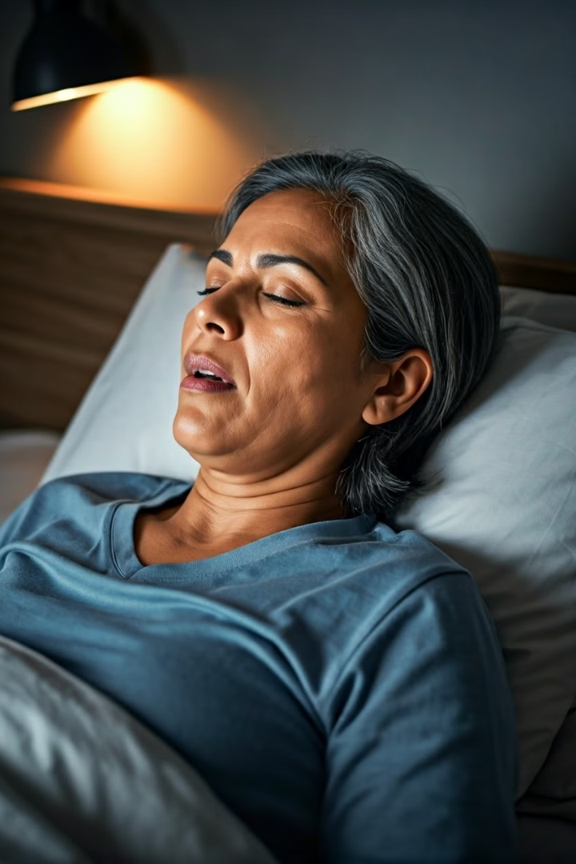Section 5: Sleep Disorders and Menopause
As women age, they can develop sleep disorders such as obstructive sleep apnea, which can result from a loss of reproductive hormones like estrogen and progesterone.
Understanding Obstructive Sleep Apnea (OSA)
Obstructive sleep apnea, or OSA, occurs when you stop breathing periodically throughout your sleep cycle. It happens when your throat muscles relax and block the flow of air into your lungs.

Sleep Cycle Begins
As you enter your sleep cycle, your body begins to relax.

Throat Muscles Relax
Obstructive sleep apnea, or OSA, occurs when your throat muscles relax and block the flow of air into your lungs.

Breathing Stops
You stop breathing periodically throughout your sleep cycle.

CycleRepeats
This process can repeat multiple times throughout the night, disrupting your sleep.

Obstructive sleep apnea, or OSA, occurs when you stop breathing periodically throughout your sleep cycle. It happens when your throat muscles relax and block the flow of air into your lungs.
Post-menopausal women are two to three times more likely to experience obstructive sleep apnea (OSA) compared with premenopausal women, and the condition can be more severe. This is because menopause can cause changes in the upper airway that make breathing during sleep more difficult.
Women who have gone through menopause may also experience a drop in oxygen levels while sleeping, which can increase the risk of developing OSA.
Post-menopausal women may also have more subtle symptoms and underreport their sleep issues, because they often attribute the symptoms to menopause itself, making them less likely to be recognized and treated.